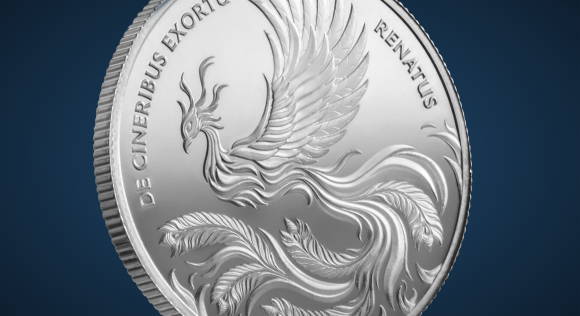In this week’s Live from the Vault, Andrew Maguire is joined by silver market veteran Peter Krauth to break down the latest developments in the silver sector. With physical supply tightening, inflationary pressures mounting, and industrial demand surging, silver is emerging as one of the most undervalued assets in today’s financial landscape.
The US Silver Market: A Reliance on Imports
Despite being a key player in global finance, the United States produces only 25% of the silver it consumes, relying on imports for the remaining 75%. With most of these imports sourced from Canada and Mexico, North America remains a crucial hub for silver supply. Any disruptions to this flow – whether through tariffs or trade restrictions – could have significant consequences for the US market, further constraining supply and driving silver prices higher.
Gold Leads, Silver Follows
Gold price has been making headlines with its relentless climb, recently surpassing $2,800. While silver has lagged slightly behind, it has still managed to push past its October peak of $32.20, signalling growing strength. Technical indicators such as RSI and MACD suggest that silver remains in a bullish trend, with no signs of being overbought. Analysts now anticipate a climb to $34–$35 in the near term, with a potential breakout above $40 later this year. The critical resistance level of $35 will be key – once breached, it could form a new support base, accelerating further gains.
The Growing Shift Towards Physical Metals
A transformation is underway in global precious metals markets. While COMEX remains dominated by paper contracts, exchanges like the Shanghai Gold Exchange operate on a fully backed physical model. This shift is draining liquidity from paper markets, tightening the available supply, and reinforcing gold and silver’s roles as monetary assets.
Notably, central banks have been aggressively acquiring gold, with purchases exceeding 1,000 tonnes for the third consecutive year. Unlike in previous decades, much of this accumulation is happening outside the US, signalling a move away from Western paper markets.
Silver’s Exploding Industrial Demand
Beyond its role as a monetary asset, silver is an irreplaceable industrial metal. Demand from the solar, electric vehicle (EV), and artificial intelligence (AI) sectors is skyrocketing, exacerbating the already critical four-year supply deficit.
Samsung’s advancements in solid-state battery technology could further drive silver consumption, with EV batteries requiring anywhere from 100g to 1kg of silver per unit. Additionally, major corporations like Tesla are reshaping treasury strategies, increasingly turning to alternative assets, including silver and gold, as inflation hedges.
Paper vs Physical Silver Disconnect
As silver ETF inflows rise and physical demand accelerates, the disconnect between paper silver and real-world availability is becoming more apparent. Asian markets are aggressively acquiring silver, depleting COMEX inventories and placing further strain on the already stretched supply chain.
Unlike the temporary refinery shutdowns seen during the COVID era, today’s silver shortages are structural – rooted in fundamental supply constraints rather than short-term disruptions.
The Silver Opportunity
With the gold-to-silver ratio standing at 87:1, silver remains significantly undervalued relative to gold. As industrial demand surges and physical supply tightens, the silver market is setting up for a long-overdue revaluation. Investors, institutions, and even governments are beginning to recognise silver’s unique position – both as an essential industrial metal and as a hedge against monetary debasement.
Sign up for Kinesis: https://kms.kinesis.money/signup
Visit Kinesis website: https://kinesis.money/
Buy gold today: https://kms.kinesis.money/signup
Ask your questions for Andy on the Kinesis forum: here
Make sure you catch the next episode of Live from the Vault: Subscribe
The opinions, analyses, and predictions expressed by Andrew Maguire and his guests in this content are their own and do not necessarily reflect the views, positions, or official policies of Kinesis.
This information is provided for informational purposes only and should not be considered financial advice. Kinesis assumes no responsibility for any investment or financial decisions made based on the information provided. Please consult with a qualified financial advisor for personalised guidance.


















